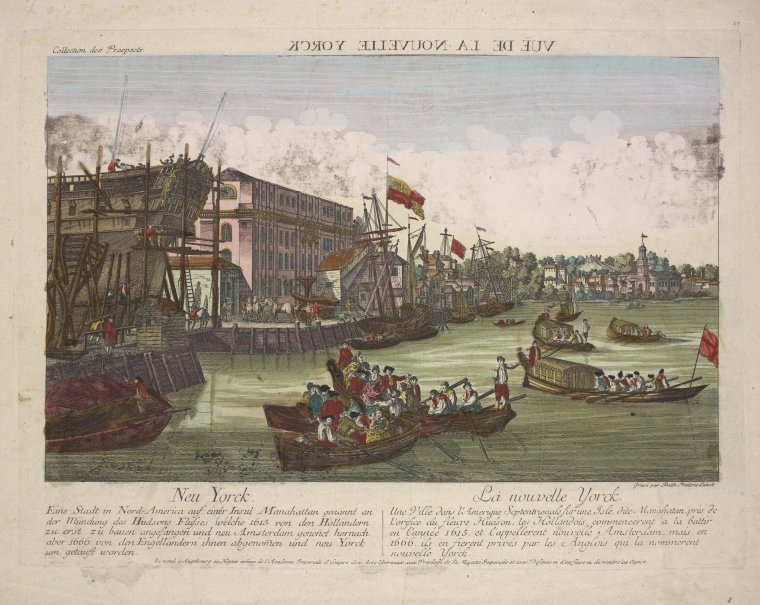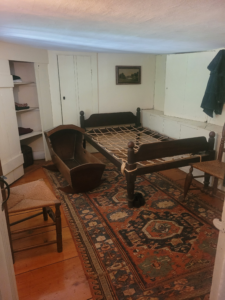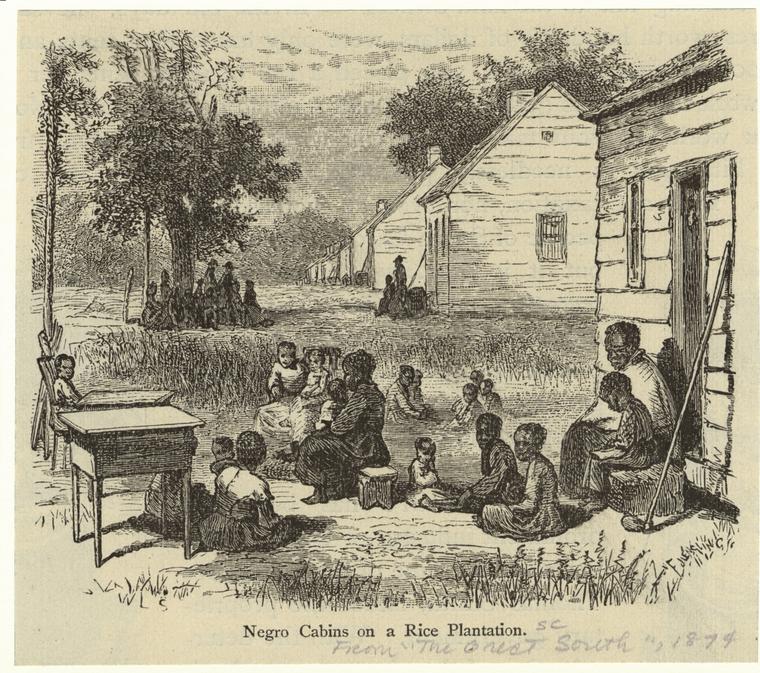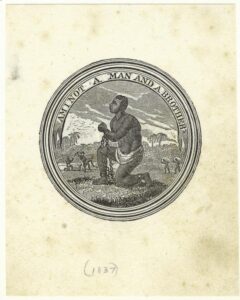Bell was born enslaved by William Livingston’s family in New York before being brought to Liberty Hall when the Livingstons moved here in 1774. She was likely responsible for completing household tasks, possibly with other enslaved women, under the supervision of Susannah Livingston. We do not know how old Bell was when she was brought to Liberty Hall, only that she had a son 13 years later, so it is possible that she was very young when the Livingstons uprooted her life to move to New Jersey. What might it have been like for Bell to leave New York City, a community with a substantial Black population, to come to a much more isolated Liberty Hall?
Who was Enslaved at Liberty Hall?: Bell and Lambert


At some point, Bell met the man who would become her son Lambert’s father. We do not know if he was white or Black, if he was enslaved or free, or if he lived at Liberty Hall or elsewhere because the Livingstons and other enslavers did not preserve information about enslaved families. If Lambert’s father was also enslaved at Liberty Hall with Bell, he likely died, was sold, or self-emancipated before Bell and Lambert were manumitted in 1787.
Due to an inventory of Liberty Hall after William Livingston’s death, we believe that Bell and Lambert likely lived in a room off the house’s main staircase. With uncomfortably low ceilings and easy access to all floors of the house, this would have afforded Bell and Lambert little privacy or comfort.

Lambert would have been made to work as a young child, beginning with lighter chores and eventually completing more difficult tasks as he got older. Some formerly enslaved people who recorded their histories later in life remembered being unaware of their status as property when they were very young. Their early memories of families and community were sometimes happy, but at the same time involved significant trauma when they realized what it meant to be enslaved, which often happened when they or a family member were sold or beaten.
Lambert grew up with his mother and others enslaved at Liberty Hal and in the surrounding area, but at the same time likely realized that his friends and family members could be sold away from him at an early age.
“The Slavery of Negroes…is utterly inconsistent, both with the principles of Christianity & Humanity; & in Americans who have almost idolized liberty, peculiarly odious and disgraceful.”

William Livingston understood that slavery was morally wrong but continued to enslave Bell and Lambert, even as he made public and private comments about slavery’s immorality. This was not atypical; other founders of the United States like George Washington, Thomas Jefferson, and James Madison understood that slavery was unjust while at the same time claiming ownership over enslaved people and benefiting financially from the institution of slavery.
Livingston eventually chose to manumit, or free, Bell and Lambert in 1787. He had been grappling with his participation in the institution of slavery in some way since the 1770s. As early as 1778, when Livingston claimed ownership over several enslaved people including Bell and Lambert, he wrote to a Quaker abolitionist that he hoped to introduce a law that would “lay the foundation for [enslaved people’s] Manumission,” but the state legislature feared that this would interfere with the Revolutionary War effort.
He became more serious about manumission in the 1780s. In 1785, he tried again to pass a gradual emancipation law and ban the importation of enslaved people into New Jersey, but this also failed in the state legislature. In the following year he applied for membership in the New York Manumission Society.
Bell and Lambert disappear from the historical record after their manumission. Some manumission documents required Black people to continue to work for their former enslavers for a wage, but this was not the case for Bell and Lambert. We do not know whether they chose to remain at Liberty Hall or if they left to make a living elsewhere, possibly in Elizabethtown or New York City, where Bell lived before coming to Liberty Hall.
After Bell and Lambert’s manumission, Livingston’s anti-slavery stance wavered. By 1790, he was willing to allow his daughter Kitty to bring James, Jenny, Phillis, and an eight-year-old girl, all enslaved, to labor at Liberty Hall. Les concerned with the immorality and injustice of slavery than his own “comfort and advantage,” Livingston accepted the institution of slavery at his home. It is unclear if these individuals were ever brought to Liberty Hall before Livingston’s death a few months later, but Liberty Hall’s later white residents certainly embraced enslavement and brought far more enslaved people to live on this property.